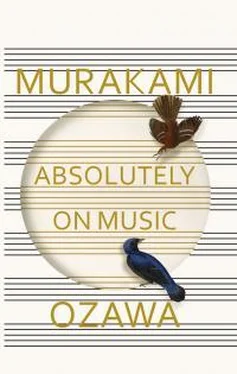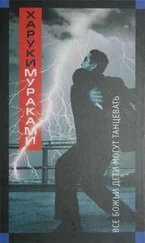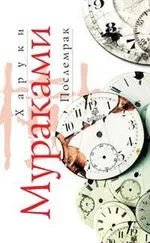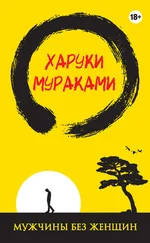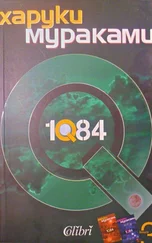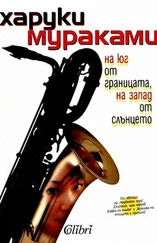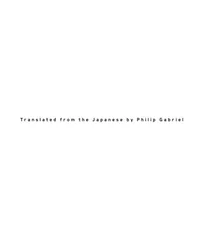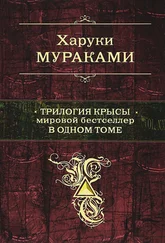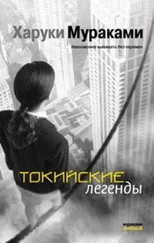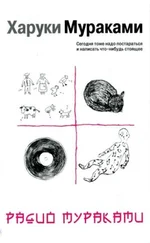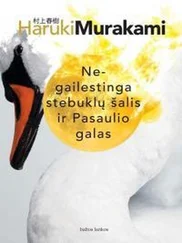MURAKAMI: But the late quartets of Beethoven seem difficult for musicians in their early twenties. This year’s more advanced group worked on his String Quartet no. 13 (Opus 130).
OZAWA: Yes, some people say you can’t perform the late Beethoven unless you’ve got a lot of living behind you. Because they’re so complex. But the students themselves asked to do it, and I think that’s a very good thing.
MURAKAMI: They were certainly giving it their best. But how about something other than string quartets—like, say, a Mozart quintet, with an extra viola in the mix? Don’t you want to have students work on something like that?
OZAWA: Yes, of course we do. For example, we’re talking about doing a Brahms sextet next year. And we did that Dvořák quintet with the part for the double bass. We invited the double bassist to join us for the ensemble piece, so it would have been too sad for him if he had nothing else to do.
MURAKAMI: Yes, it is a little sad for him. I asked him what he did while the others were rehearsing their quartets. “Just practicing all by myself,” he said. [ Laughter. ] Oh, another good piece would be that Schubert quintet with the two cellos.
OZAWA: Yes, of course, we do provide for variation. But the main thing we concentrate on is the string quartet. It’s the foundation.
MURAKAMI: Are you the one who came up with the idea for the current system, half string quartets and half ensemble?
OZAWA: Well, I guess you could say it was me, but that was how we had done it for years in my summer chamber music academy at the Okushiga Kogen ski resort. So we just brought the same approach to Switzerland. At Okushiga, too, my first thought had been to work on string quartets exclusively … but since we had brought all these musicians up into the mountains, we started playing together just for fun after dinner. We needed a conductor, and there I was! Hmm, I think the first piece we played was the Mozart Divertimento. That became part of the program. From then on we started doing a different ensemble piece every year.
MURAKAMI: So the “system” came about spontaneously. How long has the Okushiga academy been going on?
OZAWA: Well, let’s see, this program in Switzerland has been going for seven years, so the one in Okushiga must be going on nearly fifteen years.
MURAKAMI: So you put the system in place in Okushiga and imported it whole to Europe.
OZAWA: That’s it. Robert Mann came to Okushiga and started saying how we ought to do something like it in Europe. That’s how we got started.
MURAKAMI: Still, it seems a little strange to me that an orchestra conductor would establish a program organized around the string quartet. How do you explain that?
OZAWA: That’s what everybody says, but under Professor Saito I studied pretty much the main string quartet repertory, and that’s been tremendously useful to me. But I have a lot of homework to do when, like this year, the students are playing stuff I don’t know—the Janáček, say, and the Smetana. I mean, even with Haydn, there are lots of pieces I don’t know, so I have to study them. Anyhow, my most important job in this academy is to choose good teachers. If that goes well, everything else will work out one way or another. It’s the same in Japan and in Europe.
MURAKAMI: So what you do is circulate from room to room, watching the teachers in action and offering advice when necessary.
OZAWA: Yes, and sometimes I just sit there listening and only speak when somebody asks my opinion. Finally, it’s the teachers who are doing the actual teaching.
MURAKAMI: And only teaching string?
OZAWA: Well, after all, the idea from the start was that the string quartet would be the basis for all we do. I’ve thought about adding wind instruments, and I’ve spoken to some flute and oboe teachers, but once you start branching out like that, it can be really tough. The scale of things gets too big.
MURAKAMI: And no piano?
OZAWA: No, no piano. You start adding piano, and the whole feeling changes. In a piano trio, say, you’ve pretty much got three soloists. In a string quartet, the ensemble is the basis.
MURAKAMI: When I was observing the academy in action, one thing I found very interesting was the way the first and second violins would trade places from one movement to the next. Ordinarily, I suppose, the stronger player, the one with the richer experience, takes the first chair—but not here.
OZAWA: Yes, that’s a terrific approach. We started doing it that way in Okushiga and adopted the practice here. We have all our violinists take both the first and the second parts regardless of their ability.
MURAKAMI: And how about for you? Do you find that guiding people in string quartets contributes something to your own musical activity?
OZAWA: Hmm, I suppose it probably does. For one thing, it makes you look closer and closer at every little detail in the score. There are only four voices, after all. Which is not to say that because it’s a quartet, the music is simple. All kinds of musical elements are crammed in there in a very concentrated form.
MURAKAMI: Watching Robert Mann’s master classes, I noticed that his advice to the students is very consistent. He gave detailed guidance to each of the seven groups, but he had pretty much the same thing to say in each case, which was that they needed to bring out the inner voices more clearly. In a string quartet, striking that kind of balance is tremendously important, I suppose.
OZAWA: That’s true. In Western ensemble music, the inner voice is a very important element.
MURAKAMI: In orchestras, too, bringing out the inner voice has come to take on much greater significance lately, hasn’t it? So orchestral music has become more like chamber music.
OZAWA: Yes, it’s true. All the good groups are doing it. You have to if you want to bring out the flavor of the music.
MURAKAMI: But students go to music schools hoping to become soloists, don’t they? That’s why they concentrate on playing the main melody and rarely take responsibility for producing the inner voices. Which makes it all the more meaningful for them to occupy the second chair in a string quartet.
OZAWA: I think you’re right. By playing the inner voice, you get to see the interior of the music. And that may be the most important thing. It nurtures your ear. Viola players and cellists, too. Of course, unlike the violin, their instruments are designed to be part of the overall ensemble. When they come here they learn to look more deeply at those parts of the music.
MURAKAMI: Another thing that Robert Mann mentioned frequently was that the instruction to play piano doesn’t mean to play weakly. Any number of times I heard him say, “ Piano means half as strong as forte, so play at a lower volume but play with strength. ”
OZAWA: He’s right about that. When we see piano in a score, we tend to soften everything up, but what he’s saying is, even if the volume is lower, make those notes clearly audible. Give even the weaker sounds their proper rhythm and emotional force. Balance tension and release. He has gained this faith from over half a century of playing string quartets.
MURAKAMI: The sound of the Juilliard String Quartet is just like that—clear, utterly analytical, contrasting tension and release. Europeans may not be too fond of that approach.
OZAWA: No, Europeans would say it’s better to keep things a little vague and atmospheric. But Mann suggests you perform the music exactly as the composer intended, in order to deliver those precise notes to the ears of the audience. That’s what he strives for—a faithful performance that glosses over nothing.
MURAKAMI: Another thing he said a lot was “I can’t hear you!”—like at the end of a diminuendo if the notes became inaudible. It must be difficult to play such quiet passages solidly.
Читать дальше
